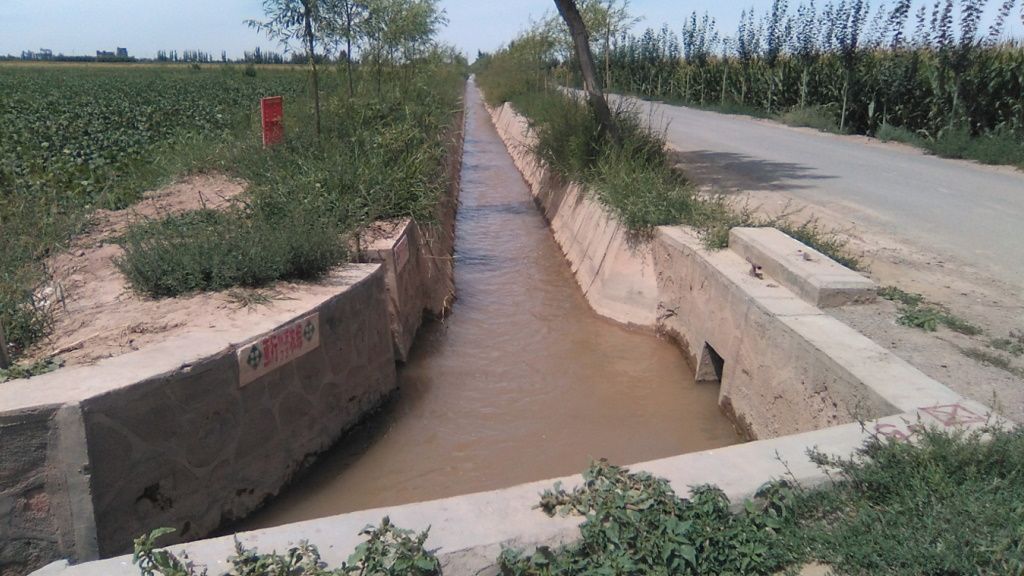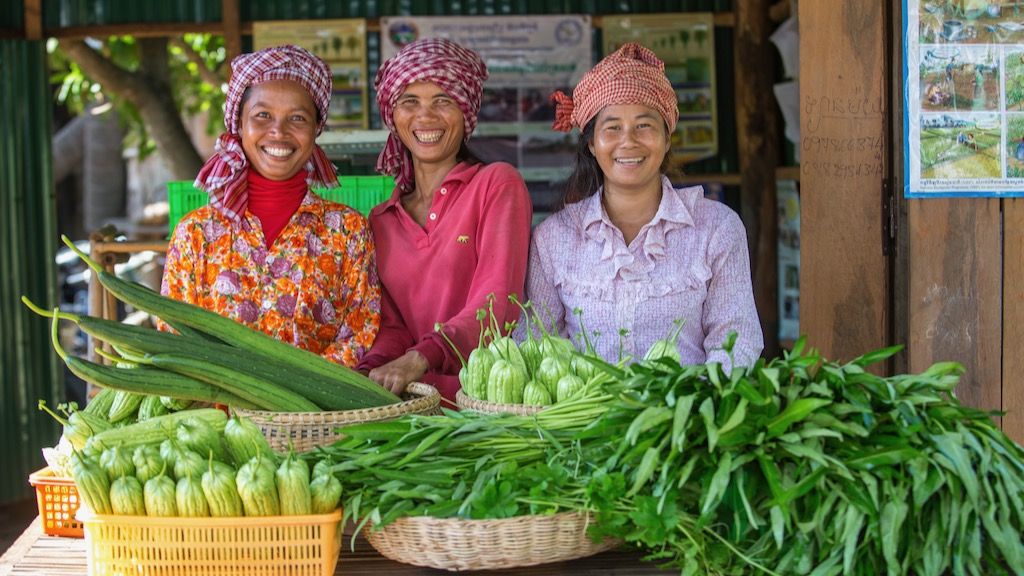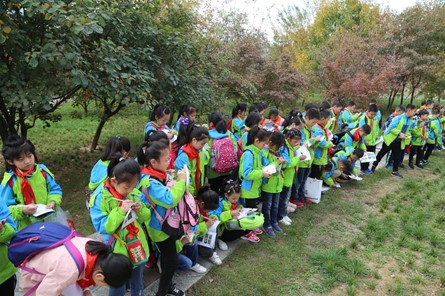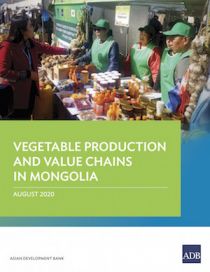Multidimensional Evolution of Rural Development Policy in the PRC




The Guangxi Zhuang Autonomous Region is one of the less developed provinces in the PRC, yet holds massive potential at the intersection of two regional cooperation programs.
Development of three of the region’s cities—Baise, Chongzuo and Fangchenggang, which are at strategic positions on the regional transport corridors of the Greater Mekong Subregion Economic Cooperation Program—was needed to support economic transformation.
An ADB project has accelerated urban development of three cities in Guangxi as part of the national development strategy to integrate this less-developed southwestern region with the international market through transport networks.
The Guangxi Zhuang Autonomous Region of the PRC is among the country’s less-developed provinces. Yet it holds massive potential for growth due to its relationship with two major regional economic initiatives—the Greater Mekong Subregion Economic Cooperation Program (GMS) and the PRC-Association of Southeast Asian Nations (ASEAN) Free Trade Area.
Guangxi is the only western province or autonomous region in the PRC that has both deepwater seaports and land ports at its international borders. Through intensive investment in construction over the past two decades, Guangxi has built a well-developed expressway system that directly connects Yunnan and Guizhou—two landlocked and less-developed western provinces—with Guangxi’s seaports at the Beibu Gulf and its land ports at the international border with Viet Nam.
Regional Potential
Further development of three cities in Guangxi—Baise, Chongzuo, and Fangchenggang, which sit at strategic positions on the GMS’s regional transport corridors—was needed to foster the region’s economic transformation. To achieve this goal, the government proposed a development project as part of the ADB’s support for accelerated urbanization in the area and balanced economic development to alleviate regional poverty.
In 2010 ADB approved a loan of $150 million for the Guangxi Southwestern Cities Development Project to improve living conditions in three cities of Guangxi, the PRC while strengthening their ability to benefit from regional economic cooperation and integration. Work included construction and upgrading of roads; improvement of municipal services such as water supply pipelines, drainage and sewage systems, and lighting and traffic control; landscaping; and the building of coastal dikes and public education facilities to promote mangrove and lakeside environmental protection.
“The project has accelerated urban development not only through creating jobs away from agriculture for poor farmers from the surrounding counties, but also as part of the national development strategy to integrate this less-developed southwestern region with the international market through transport networks,” says Director General of ADB’s East Asia Department Teresa Kho.
Dramatic Growth
From 2008 to 2019, each of the three project cities showed dramatic growth in their per capita gross domestic product (GDP). Fangchenggang increased its per capita GDP from $3,680 to $13,784; Chongzuo’s GDP increased from $1,620 to $8,246; and Baise’s GDP increased from $1,580 to $11,213.
About 4.4 million residents have directly benefited from ADB’s project in three cities of Guangxi, the PRC. Some 22,300 jobs were created, with two thirds of the jobs filled by ethnic minorities. One third of the created jobs were held by women.
“Minorities had the opportunity to participate fully in all phases of the project cycle through information disclosure, and community consultations and meetings,” says ADB Senior Project Officer Niu Zhiming. “The project provided scope for women’s effective project participation and access to employment opportunities through training and capacity building activities. These have contributed to changing the traditional way infrastructure projects were carried out in the project cities, bringing a focus on gender equality into the mainstream.”
With new or improved roads, increases in traffic speeds ranged from 14% to 65% across the three cities (against a target of 5%). Improvements in urban roads and related infrastructure have in turn contributed to the project cities’ overall development.
Environmental and Economic Benefits
The project also generated significant environmental benefits. An almost 4-kilometer coastal dike built at Fangchenggang provides once-in-30-years flood protection for 520 hectares of land. It forms a barrier protecting the mangrove forest from urban development as well as providing recreation space for residents. In Chongzuo, environmental improvements at Shuikou Lake significantly reduced pollution flowing into the lake and saw water quality improve from Class III at appraisal to Class II of Ambient Surface Water Quality in 2020.

“The project created significant social and economic benefits during implementation and since completion, and these have continued in the three cities,” says ADB’s Country Director to the PRC Yolanda Fernandez Lommen. “It helped to improve local people’s living standards and create a convenient transportation environment. The project also contributed to sustainable socioeconomic growth and regional integration development.”

Principal Communications Specialist, Department of Communications, ADB
This article is reproduced from Asian Development Bank.




While investments in agriculture together with institutional reforms have secured a stable food supply in the PRC, food security remains a concern due to productivity and environmental challenges.
Water availability is one of the biggest constrains to agricultural development in the PRC. It is aggravated by climate change that leads to more frequent droughts and floods, causing reductions in grain output.
An ADB project increased food security and boosted agricultural productivity through an integrated approach of infrastructure, institutional and capacity development.
The People’s Republic of China (PRC) feeds the largest population in the world, a task fraught with many challenges. While investments in agriculture together with institutional reforms have secured a stable food supply, food security remains a concern due to productivity and environmental challenges.
Water availability is one of the biggest constraints to agricultural development in the PRC. It is aggravated by climate change that leads to more frequent droughts and floods, causing reductions in grain output. About a decade ago, average irrigation water use efficiency in the country was only about 40%, and soil fertility was degraded in many regions due to intensive farming techniques over decades. In addition, there was limited institutional capacity to manage the advanced irrigation infrastructure that exists, and a lack of mechanized plowing and harvesting equipment.
It was against this backdrop that the Asian Development Bank (ADB) approved in 2012 a $200 million loan for the Comprehensive Agricultural Development (CAD) Project to support the PRC’s CAD program to promote a holistic approach to enhance food security. Five provinces (Anhui, Heilongjiang, Henan, Jilin, and Yunnan) and one autonomous region (Ningxia Hui Autonomous Region) were selected for the project.
“The project was designed to use an integrated approach to increase agricultural productivity through developing improved irrigation and drainage infrastructure,” says ADB Senior Natural Resources and Agriculture Specialist Shingo Kimura. “This was combined with institutional and capacity development to promote effective operation and maintenance of irrigation and drainage infrastructure, and to introduce modern agricultural technologies.”
At the preparation stage, the project team gathered extensive inputs from provincial and national government officials as well as villages, including women and ethnic minorities.
“A well-informed consultation process along with participation and involvement in subproject identification and implementation ensured the effective operation and maintenance of improved infrastructure upon completion,” says Mr. Kimura.
Over the six-year implementation period, the project improved drainage over more than 100,000 hectares (ha), developed extensive surface water and groundwater irrigation systems, and introduced water-saving technology. By adopting practices such as land leveling, soil testing, appropriately applying fertilizers, returning crop residue to farmland, and reducing salinity, the project improved soil quality in about 43,600 ha of land, while repairing almost 2,000 kilometers of roads, and providing tractors and plant equipment to farms.
It also increased agricultural productivity and irrigation water use efficiency in the project area, with grain yields increasing by 53%, cash crop yields (excluding vegetables) by 353%, and vegetable yields by 35% in the project area between 2010 and 2018.
“The project supported water-saving irrigation and conservation agriculture, which became more relevant under the PRC’s new policy orientation promoting sustainable agricultural production,” says ADB’s Director of Environment, Natural Resources, and Agriculture in East Asia Tom Panella. “It was well aligned with the PRC’s 12th and 13th Five-Year Plans, which highlighted the importance of food security, agricultural productivity, and water resources management.”
Further, the project contributed to reducing rural poverty through increasing both farm and non-farm income opportunities. It had a positive impact on women particularly by boosting their participation and representation in local water and farmer associations, increasing employment opportunities, and improving technical capacity in modern agricultural production and irrigation. The project created 24,263 jobs during implementation and 2,284 employment opportunities during operation of the facilities, with women taking up half of the new jobs created.
Ethnic minorities, which comprise about 60% of the population in the project area, benefited through training, job opportunities, and improved farmland. They comprised 60% of farmers who received training and almost 70% of those who received employment under the project.
“This project has achieved remarkable results despite the complexities of effectively managing 68 counties scattered around 6 provinces,” says ADB Country Director in the PRC Yolanda Fernandez Lommen. “The strong coordination between ADB, project implementation offices, and provincial and county governments was a key factor behind the success and smooth implementation of the project.”
| 2010 | 2018 | Increase | |
|---|---|---|---|
| Grain Yields | 5.74 ton/ha | 8.76 ton/ha | 53% |
| Cash Crop Yields | 1.90 ton/ha | 8.60 ton/ha | 353% |
| Vegetables | 25.2 ton/ha | 34 ton/ha | 35% |
| Irrigation water use efficiency – surface systems | 40% | 55% | |
| Irrigation water use efficiency – groundwater systems | 60% | 76% | |
| Average per capita income of farmers | CNY3,614 | CNY9,675 | 168% (in constant 2010 values) |
| Poverty incidence in project villages | 12.3% (2013) | 1.5% |

Principal Communications Specialist, Department of Communications, ADB
This article is reproduced from Asian Development Bank.


Opening remarks by Bambang Susantono, ADB Vice-President for Knowledge Management and Sustainable Development, at the Rural Development and Food Security (Agriculture) Thematic Group’s Sustainable Food Webinar Series, 16 March 2021.
Good evening, good afternoon or good morning to our distinguished panelists, colleagues, and guests, wherever you may be.
It is my pleasure to welcome you to our new Sustainable Food Webinar Series. The Series investigates how we can make the food systems more sustainable and resilient. This year, in September, we will have the UN Food Systems Summit, followed by ADB’s biennial Rural Development and Food Security Forum. It is an opportune time to discuss how to transform the food systems.
Risk of food insecurity is rising due to the COVID-19 pandemic
The pandemic disrupted economic growth globally, as countries responded to this tragic health crisis. Simultaneously, the risk of food insecurity is rising.
The FAO food price index has recorded an increase for nine consecutive months. Last month, food prices reached the highest level since July 2014. The World Food Programme also says that the number of people in Asia and the Pacific facing acute food insecurity nearly doubled to 265 million by the end of last year.
Countries must respond urgently to manage these growing risks. And we need to avoid the possibility of a food crisis similar to 2007/2008.
Vulnerabilities of food supply chains
One of the most important lessons of the pandemic is that our food supply chains are vulnerable. Weak logistics and storage systems are among the many challenges we face.
There are also public health risks associated with our food supply chains. WHO estimates that at least 61% of all infectious diseases are zoonotic—or those that originate from animals. Research shows that the risk of new or re-emerging zoonotic diseases is particularly high in Asia, due to the close proximity of humans and animals in wet markets.
The pandemic has underscored the close connections between people, nature, and climate. Balancing the health of people, animals, and the environment is crucial for sustainable development.
Added to this, unsustainable agricultural practices in our region poses serious threats to long-term food security. Such practices include increased and intensified chemical use. Also, getting food from the field to the table impacts our climate. According to the Intergovernmental Panel on Climate Change or IPCC, food supply chains account for up to 29% of greenhouse gas emissions.
Actions required for food system transformation
All these lessons increase the urgency of building sustainable and resilient food systems. How do we do this?
Policies and institutions must provide the right incentives to minimize environmental and health consequences. We need to scale up both public and private investments in green businesses—such as ecological agriculture, a circular bioeconomy, eco-tourism, and better pollution control.
We also can maximize the benefits of using innovative technologies. The rapid embrace of digital technology is generating new businesses and financial models that can help accelerate food system transformation. For example, remote sensing, spectral analysis, and blockchain technology can effectively reduce greenhouse gas emissions and reduce water use, among other benefits. ADB will proactively use our knowledge capacity and financial instruments to support our countries make progress in these areas, in collaboration with our partners.
Integrated rural development and food security
The pandemic saw millions of rural migrants lose their city jobs, forcing them to return to their rural homes. As we go into post-pandemic recovery, we need a clear strategy for rural development to rebuild these lost livelihoods.
In 2018, ADB adopted Strategy 2030, in which promoting rural development and food security is identified as one of the 7 priority areas. The strategy offers a holistic approach to support long-term rural recovery and resilience, while assisting our countries in transforming their agri-food systems. We believe that by effectively leveraging digital technology and addressing the rural-urban digital divide, we can achieve this in three key dimensions.
First is to promote greater agricultural productivity through innovative technologies. More “nutrition sensitive” programs can also help increase the availability and accessibility of healthy, nutritious food to all population.
Second, an enabling environment for agri-business to thrive will promote inclusive business, connecting the base-of-the-pyramid population with the mainstream economy. We believe that opportunities exist in leveraging digital technology for better integration of the huge number of smallholders into value chains. By providing on- and off-farm jobs, more youths can become “agri-preneurs.”
This leads me to the third point on rural development—that is to focus investments on improving social and environmental welfare. Better education and healthcare services, along with social protection systems, will be critical.
ADB’s achievement
Let me highlight some of our achievements in food security and rural development.
ADB increased investments in agriculture, natural resources, and rural development over 4 times this past decade. Our annual investments rose from $1.6 billion in 2009–2011 to $6 billion in 2018–2020.
In the past, farmers had few incentives to pursue sustainable agriculture and protect natural assets, which were often associated with significant costs or reduced income. This was due to the disconnect between retail food prices and the high cost of production and distribution, as well as an implicit environmental cost. This, however, has been changing over time.
For example, our Anhui Huangshan Xin’an River Ecological Protection and Green Development Project in the PRC is a model for how a structured green investment fund can support Small and Medium Enterprises in green businesses such as ecological agriculture, eco-tourism, and pollution control. It shows how we can blend ADB financing with an eco-compensation fund to help transform an agri-food system, while at the same time provide incentives for small farmers to adopt better practices.
Our knowledge work is also shifting to food system transformation. For example, ADB completed a cross-country analysis to promote green and resource-efficient agriculture in Bangladesh, Cambodia, and Nepal. We are also partnering with international organizations and national think-tanks to blend global knowledge with on-the-ground realities to create customized, context-specific knowledge solutions.
ADB’s catalytic role in financing food system transformation
Moving forward, we will continue to diversify our portfolio to cover food system transformation, leveraging on private and public partnerships, and providing innovative knowledge solutions. In fact, we are now designing an Innovative Natural Capital Financing Facility to enhance ADB’s ability to catalyze natural capital investments and provide knowledge solutions.
The facility has 3 pillars—a Natural Capital Lab, an Agribusiness Service Platform, and a Natural Capital Fund. The lab is a living and virtual platform to incubate, accelerate and expand natural capital investment. It will leverage existing accounting tools to quantify the ecosystem service value of green agricultural value chains. It will also strengthen eco-compensation for ecological services, which in turn will incentivize behavioral changes in small farmers. It establishes a financial facility to convert ecosystem asset values into a revenue model for agribusiness.
I conclude my remarks with my appreciation to our speakers today for enhancing our discussions. And the dialogue will not stop here. I look forward to our joint work ahead in helping transform our food systems. Thank you.

Vice-President for Knowledge Management and Sustainable Development, ADB


MANILA, PHILIPPINES (19 March 2021) — The Asian Development Bank (ADB) has quadrupled its support for food systems development in the past decade from $409 million in 2010 to $1.2 billion in 2020 to help close the financing gap in ensuring food security.
“One of the most important lessons learned from the coronavirus disease (COVID-19) pandemic is the urgency of generating global awareness and building sustainable and resilient food systems which requires actions at many levels,” said ADB Vice President for Knowledge Management and Sustainable Development Bambang Susantono during the launch of the Sustainable Food Webinar series on 16 March. “We definitely need to scale up public and private investments in green business, such as ecological agriculture, circular bioeconomy, eco-tourism, and pollution control.”
The COVID-19 pandemic has increased food insecurity risks, lowered the nutritional status of vulnerable populations, and highlighted the weaknesses of food supply chains and the delicate connection between food systems and development challenges. A large financing gap, estimated at $140 billion per year, also poses a barrier in transforming food systems.
In response to the findings of a recent ADB study on sustainable and resilient food systems, ADB is diversifying its investment portfolio to include food systems transformation, leveraging on private and public partnerships, and providing innovative knowledge solutions.
Through an Innovative Natural Capital Financing Facility under development, ADB will drive investments towards natural capital and provide knowledge solutions by using existing accounting tools to quantify the ecosystem service value of green agricultural value chain and strengthen eco-compensation, or payments for ecological services, to incentivize behavior change of small farmers.
Experts from ADB, the International Fund for Agricultural Development, Organisation for Economic Co-operation and Development, the World Bank, and other development partners joined the seminar along with representatives from civil society organizations, national think tanks, and independent scholars. The webinar was the first of the Sustainable Food Webinar Series in preparation for the United Nations Food Systems Summit in September and ADB’s Rural Development and Food Security Forum later this year.
ADB is committed to achieving a prosperous, inclusive, resilient, and sustainable Asia and the Pacific, while sustaining its efforts to eradicate extreme poverty. Established in 1966, it is owned by 68 members—49 from the region.



Participatory conservation and ecotourism can help maintain biodiversity while promoting sustainable livelihoods for local communities.
Overview
The Qinling Mountains in the People’s Republic of China (PRC) is a global biodiversity hotspot and one of the country’s most critical ecological function zones that supports many endangered, rare, and endemic plants and animals.
More than 60% of the estimated 15.7 million people who live in the mountains rely on farming and agricultural production. The high level of land-use pressure in the area and nature reserves created an urgent need to conserve Qinling’s ecosystem.
A project co-financed by the Asian Development Bank (ADB) and the Global Environment Facility (GEF) introduced market-oriented measures to enhance the environmental management while promoting sustainable livelihoods for local communities.
Project snapshot
Context
Located about 45 kilometers (km) southwest of Xi’an—the capital city of Shaanxi Province, the Qinling Mountains has high levels of endemism. It is home to about 20% of the PRC’s wild giant panda population, and the only known wild population of the crested ibis—one of the world’s rarest birds. The water resources from the mountain range are integral to the watersheds of the Yangtze and Yellow rivers. About 70% of all vegetation types in the country can be found in this range.
Poverty incidence in the area is high—about 37% of the total population—due to limited profitable and sustainable income generation opportunities. Tourism is being developed but with modest results.
Challenges
Heavy reliance on agriculture and competing land uses, particularly in the hilly areas of Qinling, have caused significant environmental, land, and biodiversity degradation. The land-use pressure also brought ecological conservation into conflict with economic development efforts of local communities.
Previous donor- and government-funded projects intended to address land degradation and related issues have supported rural livelihoods and land management in some areas but did not lead to sustainable environmental and human resource benefits once project funding ceased.
Solution
The Shaanxi Qinling Biodiversity Conservation and Demonstration Project(link is external) introduced a market-based approach that integrates biodiversity conservation with sustainable revenue generation and land and conservation management.
The approach involves measures that provide incentives for local communities to participate in biodiversity conservation by creating income opportunities from ecotourism businesses promoted under the project. Ecosystem service provision is aligned with the interests of individuals who comprise the market to reduce the dependency on unsustainable mechanisms.
Covering a total area of about 63,900 hectares (ha), the project strengthened the ecosystem management in the Qinling Mountains, increased rural incomes, and reduced poverty.
The project established the Qinling National Botanical Garden (QNBG)—the first national-level botanical garden in the PRC, initiated jointly by the Shaanxi Provincial Government, State Forestry Administration, and Chinese Academy of Sciences. About 4,000 ha of state forestry lands were placed under its management.
Certificates for forestry conservation and other practices for more than 6,000 ha were awarded to individual households.
The project also supported the development of species management programs for four globally threatened animal species—the giant panda, the golden monkey, the golden takin, and the crested ibis.
The QNBG built or upgraded community infrastructure, including 18 km of roads along the Tianyu river; more than 120 km of mountain paths; and village facilities supporting home-based ecotourism, such as solar lighting stands, water supply, and ecological toilets for 160 households.
The project promoted small income-generating businesses, such as the sale of local fruits and other goods. Local communities implemented conservation agriculture on about 35 ha and ecological forestry rehabilitation on about 70 ha with support from the QNBG. Ecotourism business and conservation programs provided alternative but sustainable livelihoods for local communities, which eventually lessened pressures on the lands and biodiversity.
The project also rehabilitated the Shaanxi Animal Rescue Center (SARC) following international standards and good practices for botanical gardens and wildlife conservation. In addition to their conservation functions, the QNBG and SARC provide state-of-the-art ecotourism products and services. Their revenues are reinvested for sustainable financing and conservation of the broader mountainous area.
About 260 ha of botanical gardens were established at QNBG, including 22 specialized gardens and associated public education facilities, such as a public education center, a herbarium, and two outdoor education camps. Designated as a national and provincial nature education base, the QNBG was visited by over 80,000 students from 2017 to 2019.
Research facilities such as laboratory, animal hospital, public education center, and tourist information center were installed at SARC. These also include the breeding and exhibition areas for endangered animals.
Through the GEF grant, the project supported the development of an integrated ecosystem management strategy and action plan, including policy recommendations for the establishment of a national park system (a comprehensive nature and ecosystem management regime being promoted by the central government) in the Qinling Mountains.
A species monitoring system was established under SARC, including a field-based monitoring patrol station. Ecological baseline monitoring and a database were also created for the QNBG.
Moreover, the project provided training programs and offered job exchange opportunities for technical conservation staff and implemented a replication and conservation awareness-raising program.
Results

The project supported policies that promote long-term ecosystem management, habitat management and action plans, and updates on provincial regulations for Qinling Ecological and Environmental Management.
Through the project’s initiative, the provincial government prioritized the national park system for the Qinling Mountains. The plan for the Qinling National Park has already passed an expert panel review in October 2020.
Science-based capacity development for local agencies has also strengthened the management conservation, baseline database and monitoring, species management plans, and scientific courses for public education. Around 300 staff were trained on conservation and habitat management through on-the-job training at professional institutes such as the Royal Botanic Gardens, Kew and the Durrell Institute of Conservation and Ecology in the United Kingdom, and the Chicago Botanic Garden in the United States.

Lessons
ADB. 2020. Completion Report: Shaanxi Qinling Biodiversity Conservation and Demonstration Project. Manila.
ADB. 2008. Market-Based Approaches for Managing the Asian Environment: A Review. Manila.
Shaanxi Development and Reform Commission and Shaanxi Finance Department. 2018. The Integrated Ecosystem Management of the Qinling Mountains. Beijing.
The State Council. 2011. National Principal Function Zoning Plan. Beijing.

Senior Project Officer (Environment), East Asia Department, ADB
This blog is reproduced from Development Asia.


Jiangxi province in the People’s Republic of China enhances forest productivity and ecosystem health using holistic and sustainable practices.
Overview
Forestry plays an important role in both economic development and environmental sustainability. For Jiangxi, a mountainous province in the People’s Republic of China (PRC), the forestry sector is one of the key drivers of growth as it provides protection and livelihood to rural communities. However, overexploitation of natural forests, underutilization of forestlands, inappropriate tree species selection, unbalanced stands structure, and unsustainable silviculture practices have made the province’s forest ecosystem fragile.
With the growing demand for forest products, the forestry sector of Jiangxi requires significant improvement to satisfy the economic needs of the province while rehabilitating the degraded forest ecosystem. A project funded by the Asian Development Bank (ADB) introduced sustainable forest management to help Jiangxi improve the health of its forest ecosystem and enhance its economic potential.
Project information
42022-013: China, People’s Republic of – Jiangxi Sustainable Forest Ecosystem Development Project
Project snapshot
Context
Jiangxi is a mountainous and underdeveloped province in the southeastern part of the country. In 2008, its provincial gross domestic product (GDP) per capita was only CNY14,727 (about $2,000), one-third less than the national average.
Mountainous and hilly areas account for 78% of the province’s total area. In 2008, the forestry sector’s gross output reached CNY76 billion or 14% of the provincial GDP. In the same year, its forestlands contributed to 7% and 8% of the PRC’s wood and bamboo production. Forests logs are mainly used as sawn timber, veneer, and fiberboard for domestic uses.
Development Challenges
About 10.6 million ha or 62.5% of Jiangxi’s total area is designated as forestland. However, 1.5 million ha of these lands were barren or low yielding. The average forest stock volume was only 34.4 cubic meters (m3) per ha, much lower than both the national average of 76 m3/ha and the world average of 99.8 m3/ha.
Jiangxi’s forest ecosystem was fragile due to its unbalanced age and the monoculture structure of its young and middle-aged stands and unsustainable silviculture practices. Major causes include:
The forests are also vulnerable to natural disasters, such as the winter storms that hit the PRC in 2008. The underutilization of forestland had led to soil erosion, siltation of rivers and lakes, and deterioration of water quality.
Rapid economic growth has escalated the country’s demand for forest products. The government needs to move away from production-orientated, low-quality monoculture forest development to meet the rising demand of wood-processing industries, improve the health of the forest ecosystem, and boost carbon sequestration to mitigate climate change.
Solution
Approved by ADB in 2010, the Jiangxi Sustainable Forest Ecosystem Development Project helped establish new forest plantations, rehabilitated barren and low-yielding forestlands, and promoted sustainable forest management through an ecosystem-based, multi-functional forest development approach.
Sustainable forest management is a strategy that contributes to the management, conservation, and sustainable development of forests and provides for their multiple and complementary functions and uses to meet the social, economic, ecological, cultural, and spiritual needs of present and future generations. The project adopted a holistic approach which takes ecological, silvicultural management, and social aspects into account following the sustainable forest management principles.
The project also enhanced the local capacity and reinforced environmental protection awareness among stakeholders through intensive trainings on sustainable forest management, forest carbon sequestration and stock estimation, and climate disaster risk mitigation. It also provided forest insurance against natural risks and set up a system to monitor forest carbon stock.
Following the sustainable forest management principles, new design rules and environmental codes were prepared by the project to guide participating counties and end-borrowers through site selection, design, implementation, and inspection. A total of 47,638 ha of forestlands were developed or rehabilitated. Timber plantation (Chinese fir and slash pine), tree crops (orange, oil tea, and tea trees), and low-yielding and snowstorm-damaged bamboo rehabilitation were supported by the project loan to offer options to farmers to balance short-term and long-term incomes when they plan for forest investment. Mixture of broadleaf species with conifers and bamboo groves were introduced to protect forests against climate-related disasters, pests, disease, and fires. Natural regeneration is also protected. Mixed forest is promoted versus monoculture to improve ecological biodiversity and multiply the functions of timber plantation. Farmers adopted environmentally friendly silviculture practices from site preparation to tending.
A forestry insurance program was established to protect the forestry sector from risks. With government subsidy, nearly 30,000 ha of timber plantation was covered by a forest insurance policy to improve the risk resilience of forest farmers, enterprises, and farms. The premium for timber forests is 0.4% of the costs to replant the trees per mu (unit of land measurement in the PRC). Forest insurance and risk mitigation measures training for farmers were also conducted.
Taking advantage of the reform on forest tenure and the development of trading centers for forestry property rights in the PRC, the project accepted forest property and forestland tenure rights as collateral among other collateral and guarantees. This flexible approach effectively enhanced accessibility to credit, and addressed a longstanding issue within the agriculture and forestry sectors about the lack of investment resulting from insufficient collateral or guarantee.
Results
The productivity of the project forests improved with an average yield resembling Jiangxi’s first-rate or top 10% forests. Tea-seed oil yields increased from 225 kilograms per hectare (kg/ha) to 531 kg/ha, orange yields reached 22,612 kg/ha, while tea leaf yields reached 3,088 kg/ha.
Figure 1. Benefits of Sustainable Forest Management

Source: Asian Development Bank
The project promoted environmentally sound practices and generated significant environmental benefits. Bare mountains and slopes were converted into ecologically stable forest stands. Mixed forest plantations improved the structure of the forest, which enhanced resistance to pests and fire, increased biodiversity, and boosted water and soil conservation. Timely rehabilitation of snowstorm-damaged bamboo forests protected them against climate-related disasters, pests, and diseases. Water conservation reached 18 million m3 and soil erosion declined by about 95,300 tons annually. The application of integrated pest management and bio-agents further prevented pollution and outbreaks of pests and diseases. The project also reduced the use of chemical fertilizers by 3.2 million kg per year and replaced them with organic compost and compounds. The project is estimated to contribute about 142,900 tons in carbon sequestration annually.
The intensive training and extension programs improved the local communities’ understanding of and skills in sustainable forest management. The sustainable forest management concept and approach were institutionalized within Jiangxi forestation administration system.
The project also provided 75,368 local farmers and individuals, two-thirds of whom are women, with job opportunities like land preparation, tree planting, forest tending, daily maintenance, and harvesting. Nearly 12,000 households who participated in afforestation and bamboo rehabilitation have improved incomes through profit sharing in farmers’ cooperatives or companies. About 25,000 households have earned incomes by leasing their forestland for annual rents. The high demand for nursery stock, fertilizer, and forestry equipment also contributed to increased rural incomes and reduced poverty in the project area. From 2011 to 2018, rural income grew from 95.9% to 205.7% and poverty incidence rates in project areas declined from 24%–34% to 0.25%–4.71%.
Lessons
Practices that are effective in balancing the ecological and economic development of forestlands include:
A comprehensive quality management mechanism for this project was established with specific indicators and third-party investigation to ensure high quality and productivity of the forestlands. The project’s achievement has attracted farmers’ attention and influenced silviculture activities beyond the project area. The project management office installed signboards on exemplary sites for publicity and to set examples.
Increased financing support from both the public and private sectors allowed for the effective utilization of forestland and further improved the quality of afforestation. In the medium and long-term, this enhances forest production, environmental benefits, and livelihoods.
Overall, it is possible to satisfy the social and economic development needs while balancing ecological and economic development.

Senior Project Officer (Natural Resources and Agriculture), East Asia Department, ADB
This blog is reproduced from Development Asia.


© 2025 Regional Knowledge Sharing Initiative. The views expressed on this website are those of the authors and presenters and do not necessarily reflect the views and policies of the Asian Development Bank (ADB), its Board of Governors, or the governments they represent. ADB does not guarantee the accuracy of the data in any documents and materials posted on this website and accepts no responsibility for any consequence of their use. By making any designation of or reference to a particular territory or geographic area, or by using the term “country” in any documents posted on this website, ADB does not intend to make any judgments as to the legal or other status of any territory or area.
